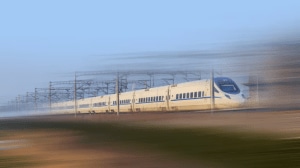With the expected large adoption of new-age technology such as the Internet of Things (IoT), Edge computing and artificial intelligence (AI), among others, experts are trying to compile these technologies into one. Industry experts believe the collaborative efforts of these technologies can level up the business technology landscape. The smart connecting feature of IoT with edge computing’s ability to gather data instantly based on location is expected to transform the data collection method. This added with the help of AI’s automation and tracking process can help businesses identify users’ needs on a precise scale. IT spending worldwide is projected to reach around $4.6 trillion in 2023, a 5.5% increase compared to 2022, as per insights from Statista. In conversation with FE-TransformX, Sanjeev Malhotra, CEO, MeitY- nasscom Center of Excellence, on how the synergy of AI, IoT and edge computing is changing business technology. (Edited Excerpts)
How will the synergy of AI, IoT and Edge computing enhance business technology?
Today we are expected to adopt the new technology known as generative AI, which is a customisable artificial intelligence (AI). As for IoT and Edge computing, these are already smart data collection technologies. Adding AI into these will enable businesses to identify the exact needs of their customers, along with the other key factors needed for marketing. This includes geographical factors, economic status, and identifying their competitors based on the location, among others.
With smart identification technology, how will it affect the cost structure of businesses?
The synergy is expected to cut down costs in areas such as marketing and advertising, among others. With the help of artificial intelligence, businesses will be able to identify their potential customers and execute marketing strategies based on that. The savings could be then used to upgrade business technologies, which can eventually improve the overall business performance.
Which are the sectors that can benefit from the synergy of AI, IoT and Edge computing?
Sectors such as healthcare, logistics and manufacturing, among others, are believed to benefit the most. With healthcare adopting technologies such as cloud computing and Artificial Intelligence, among others, to store data and identify users’ needs, this collaboration will enhance the whole data computing and data management system. However, the manufacturing industry is expected to lag behind when it comes to the adoption of new technologies. By creating a prompt for artificial intelligence by using data collected from IoT and Edge computing, manufacturers can identify the need for the products and the location where they need to be launched. Moreover, it needs to imply predictive analysis methods in order to enhance the functionality and cut down costs.
How is CoE helping businesses to upgrade technology structures?
With our collaborative effort, we aim to fund startups which are dedicated towards the development of new-age technology. The Centre of Excellence (CoE) aims to create a co-existing space of technology and product creation. The users can create technology as per their needs and their targeted audience demands.
What makes Centre of Excellence (CoE) different from other big technology companies?
There are many startups that find the cost structure of technology provided by big tech companies a bit costly. Also, sometimes they are unable to provide technology as per the business needs. At Centre of Excellence (CoE), the average cost for a product ranges around Rs 10 lakh, which may differ as per the product. However, we go by a trial method, where users can cancel their product anytime.
How can India being a developing country cater to the cost-structure of new-age technologies?
Today startups are something that is gaining momentum, with more and more young generations shifting to the idea of entrepreneurship. Apart from that there are many organisations that are willing to fund such startups, Centre of Excellence (CoE) being one of them. India is expected to have seen a major shift towards the adoption of technologies and is expected to spend about Rs 24 crore in export technologies, as mentioned by Rajeev Chandrasekhar, Minister of State, Skill Development and Entrepreneurship and Electronics and Information Technology. Moreover, we can expect the improvement and adaptation of technology in business on a large scale compared to the early days.








